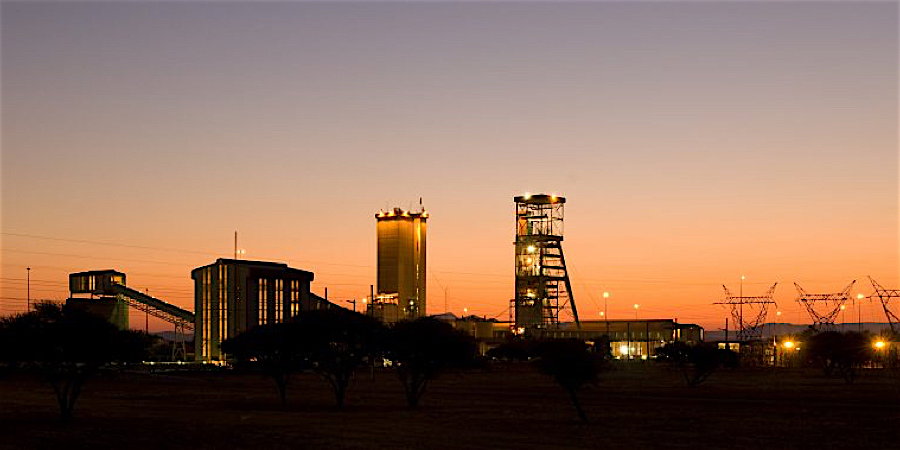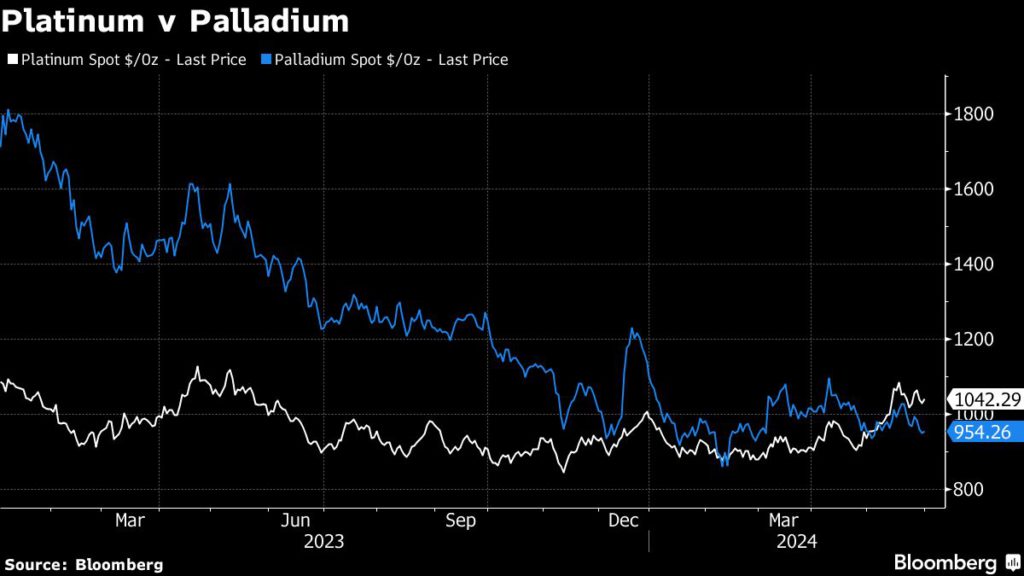Palladium output cuts needed to bolster market, Northam CEO says

Palladium prices won’t recover unless the mining industry cuts supply further, according to the boss of a South African producer.
Palladium – mostly used to curb emissions from gasoline vehicles – has fallen 72% since peaking in March 2022 following Russia’s invasion of Ukraine. Just over two-fifths of the metal is produced by Russia’s Norilsk Nickel PJSC as a byproduct of nickel mining, but palladium is also extracted alongside platinum in South Africa, Zimbabwe and North America.
Paul Dunne, chief executive officer of Northam Platinum Holdings Ltd., said the market for platinum-group metals “is the worst” he’s seen in a career that started in the late-1980s. Northam and its larger South African peers – Anglo American Platinum Ltd., Sibanye Stillwater Ltd. and Impala Platinum Holdings Ltd. – have been cutting costs and scaling back expansion plans after earnings slumped last year. But more is required, Dunne said.
“We need to see a real structural change in the supply of palladium to reassert pricing power into the market,” he said in an interview. “That’s obviously going to bring some pain but we think it’s necessary.”
Although Northam plans to increase production this year, the company announced in February that it would pare back or pause development projects at its three operating mines.

Analysts at Macquarie Group Ltd., Bank of America Corp. and Citigroup Inc. predict rising palladium surpluses if there aren’t significant reductions in production, as electric vehicles — which don’t require catalytic converters to filter exhaust fumes — take a greater share of the auto market.
Implats and Sibanye have already taken an ax to high-cost, palladium-dominant assets in North America, shelving an expansion and shortening the life of a mine. Nornickel has said its palladium output could fall as much as 15% this year.
Anglo American Plc’s plan to spin off Johannesburg-listed Amplats — as part of a dramatic restructuring to fend off a takeover bid from BHP Group — could also curb production, according to Dunne.
“A standalone Amplats, to me, probably implies a tighter supply base,” he said.
The price of platinum – also used in vehicle anti-pollution devices but less dependent on auto demand – has fared better than palladium, and currently trades near where it began last year.
About 70% of platinum production comes from South Africa, and consumption is expected to outstrip supply this year by the biggest margin in a decade. That deficit isn’t going to impact prices for the time being, according to Dunne, due to inventory destocking and the way Chinese automakers have “heavily thrifted” the amount of PGMs used in internal combustion engines.
The destocking phase will likely last another year, after which the market should tighten and prices improve, he said. Naturally depleting ore bodies across older South African mines will also help ensure a balance between supply and demand in the future, as the industry adjusts to lower auto demand, according to Dunne.
In the meantime, the structural changes in China promises more pain for the PGMs industry.
“Neither miners nor refiners can make money at this price level,” Dunne said.
(By William Clowes)
{{ commodity.name }}
{{ post.title }}
{{ post.date }}

Comments